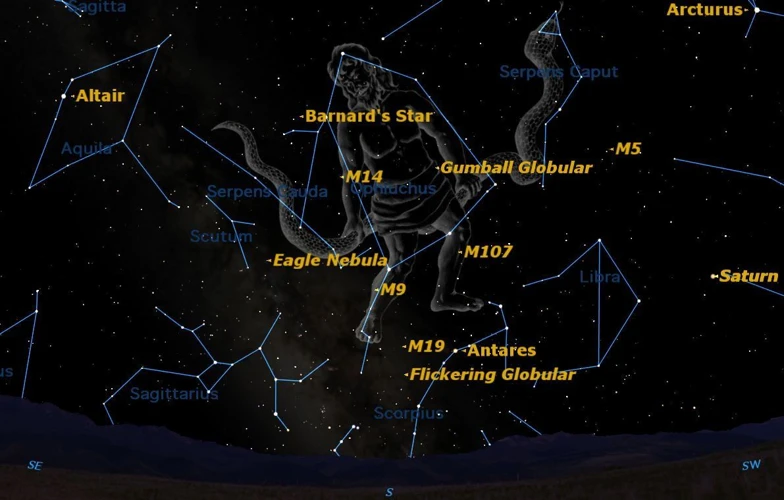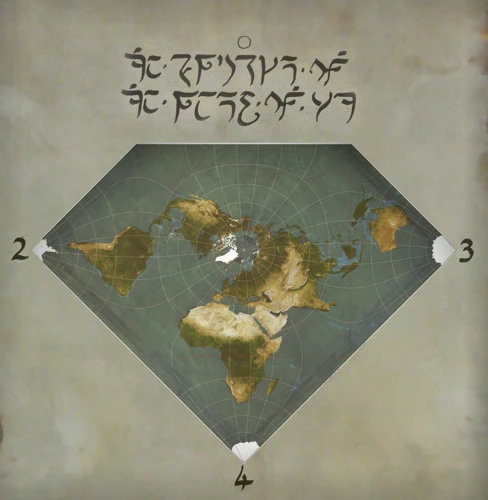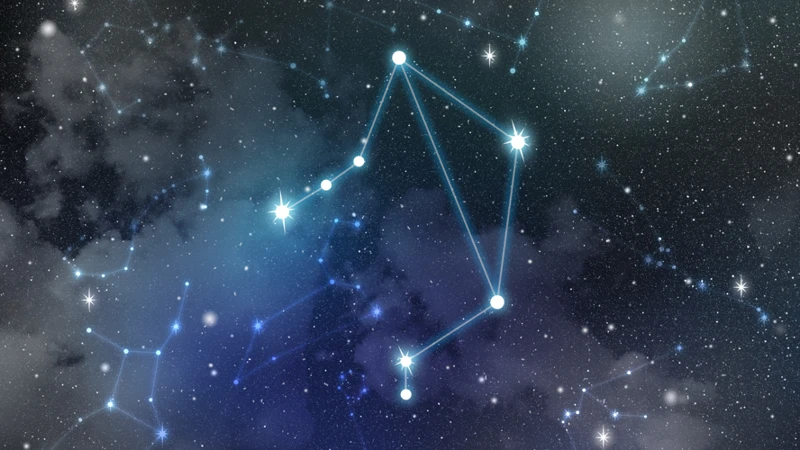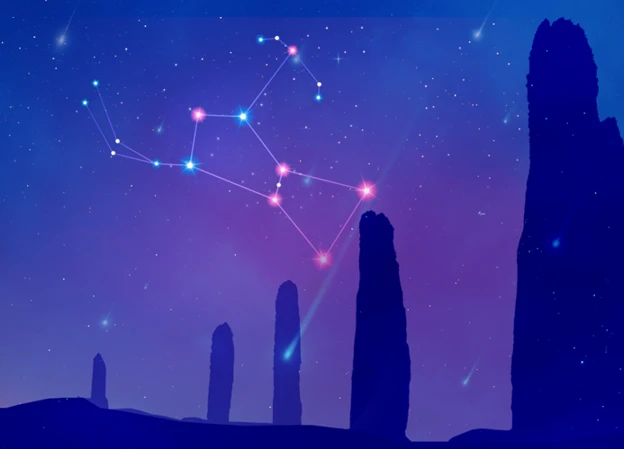Have you ever looked up at the night sky and wondered about the stories hidden among the stars? While many of us are familiar with the classic constellations like Orion and Ursa Major, there is a whole world of modern constellations waiting to be discovered. These forgotten gems, with names like “The Serpent’s Curl,” “The Phoenix’s Wings,” and “The Sailor’s Spear,” have been lost in the shadow of their more famous counterparts. But they hold their own unique tales and offer a fresh perspective on the celestial wonders above. In this article, we will delve into the importance of modern constellations, uncover the stories behind these forgotten gems, provide tips for observing them, and discuss ways to rekindle interest in these celestial wonders. Get ready to embark on a journey of rediscovery and unlock the secrets of the night sky.
Contents
- The Importance of Modern Constellations
- The Forgotten Gems
- Rediscovering Lost Stories
- Constellation Observing Tips
- Rekindling Interest in Modern Constellations
- Conclusion
-
Frequently Asked Questions
- 1. Why are modern constellations important for stargazers?
- 2. How are modern constellations different from ancient ones?
- 3. Can modern constellations be used for navigation?
- 4. Are modern constellations recognized by all cultures?
- 5. How can I locate modern constellations in the night sky?
- 6. What tools do I need to observe modern constellations?
- 7. Are there any famous stars or objects associated with modern constellations?
- 8. Are there any cultural stories or mythology associated with modern constellations?
- 9. Can anyone propose a new modern constellation?
- 10. How can we encourage more interest in modern constellations?
- References
-
Frequently Asked Questions
- 1. What are modern constellations?
- 2. How do modern constellations differ from traditional constellations?
- 3. Why were some modern constellations forgotten?
- 4. Can modern constellations be seen with the naked eye?
- 5. How are modern constellations helpful in astronomy?
- 6. Are there any unique stories associated with modern constellations?
- 7. Can I create my own modern constellation?
- 8. How can I find modern constellations in the night sky?
- 9. What is the best time of year to observe modern constellations?
- 10. How can I share my love for modern constellations with others?
- References
- Read More
The Importance of Modern Constellations

Modern constellations play a vital role in our understanding and appreciation of the night sky. These constellations, which were introduced relatively recently compared to their ancient counterparts, provide a fresh perspective and expand our knowledge of celestial objects. The Evolution of Constellations traces the journey of constellations from their ancient roots to the modern era. In ancient times, constellations were formed based on the observations and interpretations of various cultures around the world. Over time, as our understanding of astronomy grew, new constellations were added to reflect the ever-expanding map of the sky. Modern constellations fill the gaps left by the ancient ones and represent discoveries made in more recent times. They are a testament to the ongoing progress of astronomical research and the human desire to explore and understand the cosmos. The Contribution of Modern Constellations lies not only in expanding our knowledge but also in enabling a more accurate and detailed study of the sky. By dividing the celestial sphere into smaller, more precise sections, modern constellations assist astronomers in mapping and identifying specific stars, galaxies, and other celestial objects. This allows for more efficient research and fosters a deeper understanding of the universe. Our connection to the sky and its stories is not limited to ancient mythology. Modern constellations offer an opportunity to connect with the present, linking our collective human experiences with the wonders of the cosmos. They provide a bridge between the past and the present, allowing us to appreciate both the timeless nature of the stars and the ever-changing world we inhabit. So, let us embark on a journey of rediscovery as we explore the complex and fascinating world of modern constellations.
1.1 The Evolution of Constellations
The evolution of constellations is a captivating journey that spans centuries and cultures. In ancient times, before the advent of modern technology, people looked to the night sky for guidance, storytelling, and a deeper understanding of the world around them. From the early civilizations of Mesopotamia to the Greeks and Romans, constellations were born out of a desire to make sense of the celestial bodies that adorned the heavens. Initially, constellations were formed by connecting the dots between stars that appeared to form recognizable shapes, such as animals, mythological figures, or objects. These ancient constellations often had deep ties to cultural mythology and served as tools for navigation and timekeeping. The constellations we know today, however, have evolved over time. With advancements in astronomy and the advent of telescopes, scientists and astronomers began to uncover new stars and celestial objects that didn’t fit within the existing constellations. This led to the creation of new modern constellations that filled the gaps and helped map the sky in a more comprehensive way. Each modern constellation tells its own story and provides a window into the ever-expanding understanding of our universe. As our knowledge of the cosmos continues to grow, so too does the possibility of discovering new constellations and uncovering even more of the mysteries that lie among the stars. The evolution of constellations serves as a testament to the human fascination with the night sky and our never-ending quest to unravel the secrets it holds.
1.2 The Contribution of Modern Constellations
Modern constellations make a significant contribution to the field of astronomy and our understanding of the cosmos. These constellations, introduced more recently compared to ancient ones, have added depth and precision to our celestial observations. One aspect of their contribution is their role in dividing the celestial sphere into smaller sections. By doing so, modern constellations facilitate the process of mapping and identifying specific stars, galaxies, and other celestial objects. Astronomers can now focus their research and observations on these smaller sections, which leads to more efficient and accurate studies. For example, the constellation Gemini allows astronomers to concentrate on studying the interactions and dynamics of the stars within that particular group. This specialized knowledge helps us unravel the intricacies of celestial interactions and allows for a deeper understanding of our universe. The presence of modern constellations has expanded our database of knowledge. With each newly discovered constellation, our catalog of stars and celestial objects grows, enabling a more comprehensive understanding of the cosmos. This abundance of information contributes to ongoing astronomical studies and aids in the formulation of new theories and discoveries. As we continue to explore the night sky and uncover new constellations, our understanding of the universe expands, furthering our appreciation of its grandeur and complexity.
The Forgotten Gems

Among the vast array of constellations in the night sky, there are some lesser-known yet captivating gems that often go unnoticed. These forgotten constellations have intriguing names and unique formations that make them worthy of rediscovery. The Serpent’s Curl is a constellation that weaves its way through the stars, resembling the sinuous body of a serpent. Its coils trace an intricate pattern across the sky, inviting our imagination to unravel its secrets. The Phoenix’s Wings is another forgotten gem, representing the majestic wings of the mythical Phoenix. Stretching across a significant portion of the sky, this constellation symbolizes rebirth and renewal. Finally, The Sailor’s Spear is a constellation that pays homage to the brave sailors who navigated the seas using the stars as their guide. Its distinctive shape showcases the spear or harpoon held by the mythical sailor, forever immortalized in the night sky. These forgotten constellations may not be as widely recognized as their ancient counterparts, but they have their own stories to tell and offer a fresh perspective on the cosmic tapestry above. Exploring these gems allows us to uncover hidden connections, inspire curiosity, and appreciate the diversity of celestial wonders that surround us. So, let us embark on a journey of rediscovery as we gaze upon these forgotten constellations and embrace their unique beauty.
2.1 The Serpent’s Curl
The Serpent’s Curl is a captivating modern constellation that often goes unnoticed amidst the more prominent figures in the night sky. This constellation, also known as Serpens Caput, represents the head of a serpent and is part of the larger constellation Serpens. Its distinct shape resembles a curled snake, as if preparing to strike. While ancient constellations often drew upon mythology and folklore, the story behind The Serpent’s Curl is relatively recent. It was officially recognized and named in the 17th century by Polish astronomer Johannes Hevelius. The Serpent’s Curl holds significance in the scientific community as it contains several notable objects, including the Cat’s Eye Nebula and the famous globular cluster Messier 5. These celestial treasures make The Serpent’s Curl a fantastic sight for stargazers and astronomers alike. Exploring this constellation can deepen our understanding of the universe and inspire a sense of awe and wonder. So, next time you gaze at the night sky, take a moment to appreciate the graceful yet powerful form of The Serpent’s Curl /unraveling-gemini-libra-interactions/.
2.2 The Phoenix’s Wings
One of the forgotten gems among modern constellations is The Phoenix’s Wings. This celestial formation draws inspiration from the mythical creature known as the phoenix, a symbol of rebirth and renewal. The story behind The Phoenix’s Wings is a tale of transformation and resilience. Just as the phoenix rises from its ashes, this constellation represents the journey of overcoming challenges and embracing new beginnings. The imagery of wings symbolizes freedom, transcendence, and the ability to soar above adversity. While the phoenix is rooted in ancient mythology, its presence in the night sky through The Phoenix’s Wings gives it a contemporary relevance. Looking up at this constellation, we are reminded of the power of resilience and the potential for personal growth. The inclusion of mythological elements in modern constellations serves as a bridge between ancient wisdom and the present understanding of the cosmos. As we explore the luminous trails of The Phoenix’s Wings in the night sky, we can reflect on our own ability to rise above challenges and embrace transformation, just like the legendary phoenix. For a deeper dive into the mythology of the phoenix and its significance in various cultures, refer to our comprehensive guide on African Mythology, where you’ll discover captivating stories and symbolic interpretations related to this mythical creature.
2.3 The Sailor’s Spear
The Sailor’s Spear is a modern constellation that often goes unnoticed among the more popular constellations. Represented by a group of stars resembling a spear, this constellation holds its own unique story and symbolism. Its positioning in the night sky and the mythology associated with it make it a fascinating object of exploration. The Mythology behind the Sailor’s Spear traces its origins to ancient seafaring cultures that relied on the stars for navigation. Sailors would use the position of the Sailor’s Spear to guide their way across the vast oceans. According to mythological tales, the constellation represents the weapon of a brave and skilled sailor who protected his crew from the perils of the sea. The stars within the Sailor’s Spear constellation were believed to hold great power and served as a guiding light for sailors, ensuring safe passage and protection during their journeys. This constellation reminds us of the courage and resilience of those who ventured across the unknown waters, relying on the stars to guide them through turbulent seas. Rediscovering the Sailor’s Spear offers us a chance to reflect on the rich history of seafaring cultures and their deep connection to the celestial realm. So, the next time you gaze upon the night sky, take a moment to locate the Sailor’s Spear and appreciate the courage of those who sailed under its guiding light.
Rediscovering Lost Stories

Rediscovering lost stories is a captivating endeavor that brings the forgotten modern constellations to life. Each constellation has its own unique mythology and history, waiting to be unraveled. The Mythology behind the Serpent’s Curl takes us on a journey through ancient myths and legends associated with this constellation. According to one tale, the Serpent’s Curl represents a great serpent that guarded a hidden treasure. A clever hero outwitted the serpent, leading to a dramatic showdown in the night sky, forever immortalized as a constellation. Unraveling the history of The Phoenix’s Wings reveals its origins in ancient cultures that revered the mythical phoenix. As the phoenix rises from the ashes, its wings spread across the sky, reminding us of the cyclical nature of life and the possibility of transformation. The Sailor’s Spear, also known as The Journey of the Sailor’s Spear, tells the tale of a brave sailor who embarked on a perilous adventure across the vast oceans. As a tribute to his courage, his spear was cast into the heavens, forming a constellation that guides sailors to this day. Rediscovering these lost stories connects us to the rich tapestry of human imagination and reminds us of the power of storytelling across time and cultures. As we gaze upon these constellations, we can envision the ancient myths and histories that have shaped our understanding of the cosmos. Join us as we embark on a journey of rediscovery and uncover the fascinating tales behind these forgotten constellations.
3.1 The Mythology behind the Serpent’s Curl
The Serpent’s Curl is a modern constellation that captivates stargazers with its fascinating mythology. In The Mythology behind the Serpent’s Curl, we dive into the enchanting tale that inspired this celestial pattern. According to ancient folklore, the constellation represents the serpent that protected the sacred treasure of wisdom. In the myth, a brave adventurer embarked on a perilous quest to obtain this treasure, which was said to bestow immense knowledge and power on whoever possessed it. The serpent, known for its cunning and wisdom, coiled and twisted itself into a mesmerizing pattern in the night sky to guard the treasure. Its curling form became a beacon for those seeking wisdom, guiding them to embark on their own personal journeys of discovery. The Serpent’s Curl constellation serves as a reminder that the pursuit of knowledge and wisdom is an ongoing and transformative process. It encourages us to embrace curiosity and explore the unknown, just as the mythical adventurer did. So, when you gaze upon the constellation of the Serpent’s Curl, let it inspire you to embark on your own quest for knowledge and open your mind to the wonders of the universe.
3.2 Unraveling the History of the Phoenix’s Wings
Unraveling the History of the Phoenix’s Wings takes us on a journey to discover the origins and significance of this modern constellation. The Phoenix’s Wings constellation is an exquisite formation that represents the mythical bird known for its ability to rise from the ashes. The story of the phoenix is deeply rooted in ancient mythology and symbolizes renewal, rebirth, and immortality. According to legends, the phoenix possessed vibrant, fiery plumage that would burst into flames at the end of its life cycle, only to be reborn from its own ashes. The stars in the Phoenix’s Wings constellation beautifully depict the outstretched wings of this majestic creature.
While the exact origin of the Phoenix’s Wings constellation is not well-documented, many believe it was introduced as a modern constellation in the 17th century by the astronomer Johannes Hevelius. Hevelius, known for his detailed star catalogs, sought to fill the gaps left by the ancient constellations and added new formations based on his own observations.
The Phoenix’s Wings constellation can be easily located in the southern hemisphere, particularly in the months of December to March. It is situated near the bright star Fomalhaut. Observing this constellation during a clear, dark night allows us to witness the celestial portrayal of the phoenix, reminding us of the cyclical nature of life and the potential for transformation.
The phoenix holds significance in various cultures around the world. In Greek mythology, it represents the sun and the eternal cycle of life. In Egyptian mythology, the phoenix symbolizes the god Ra and the rising sun. The phoenix is also seen in Chinese and Japanese mythology, where it embodies grace, beauty, and good fortune.
Exploring the history and mythology surrounding the Phoenix’s Wings constellation offers us a deeper understanding of the rich tapestry of human culture and its connection to the stars. As we gaze upon this dazzling constellation, we are reminded of the enduring power of storytelling and the eternal mysteries that lie beyond our reach.
3.3 The Journey of the Sailor’s Spear
The Sailor’s Spear is a unique modern constellation that deserves attention for its intriguing journey and rich history. Legend has it that this constellation represents the spear of a courageous sailor who sailed across treacherous seas in search of new lands and discoveries. The Mythology behind the Sailor’s Spear tells the story of a brave sailor who embarked on a perilous voyage, facing storms and unknown dangers. This constellation serves as a symbol of the sailor’s indomitable spirit and determination. The Sailor’s Spear can be found in the southern hemisphere, and its distinct shape makes it stand out among the other constellations. Its bright stars create a spear-like pattern, evoking a sense of adventure and excitement. As we ponder the significance of the Sailor’s Spear, we are reminded of the countless explorers throughout history who navigated the world’s oceans, expanding our understanding of the planet and connecting distant lands. This constellation serves as a reminder of the human desire for exploration and discovery, even in the face of uncertainty. The Sailor’s Spear offers a window into the past, where ancient sailors relied on the constellations for navigation and guidance. Today, it serves as a testament to human ingenuity and the enduring spirit of exploration. Let us marvel at the cosmic stories hidden within the Sailor’s Spear and honor the intrepid sailors who braved the unknown to shape our world.
Constellation Observing Tips

Observing modern constellations can be a thrilling experience, offering a fresh perspective on the night sky. To make the most of your stargazing adventure, here are some valuable tips to keep in mind:
1. The Ideal Time and Season: Timing is crucial when it comes to constellation observing. Check the astronomical calendar to find out when the desired constellation is most visible. Certain constellations may be best observed during specific seasons or times of the year due to their position in the sky. It’s essential to plan your stargazing session accordingly.
2. Finding the Forgotten Constellations: Locating modern constellations can sometimes be challenging as they may not be as prominent or well-known as the classical ones. However, with a little guidance, they can be found. Utilize star maps, apps, or online resources to help identify and locate the forgotten gems of the night sky. You may also consider joining a local astronomy club or participating in star parties, where experienced peers can provide valuable insights and assistance.
3. Equipment and Preparation: Although modern constellations can be observed with the naked eye, using binoculars or a telescope can enhance the experience. Consider investing in a pair of binoculars or a beginner-friendly telescope for a more detailed view. Additionally, dress appropriately for the weather, as stargazing often involves spending extended periods outdoors in the evening or at night. Comfortable clothing, blankets, and thermoses for hot drinks can enhance the overall enjoyment of your stargazing adventure.
Remember, patience is key when observing constellations. Take your time to scan the sky, allowing your eyes to adjust to the darkness, and take in the full beauty of these forgotten celestial wonders. Happy stargazing!
4.1 The Ideal Time and Season
When it comes to observing modern constellations, timing is key. To make the most of your stargazing experience, it’s important to consider the ideal time and season for viewing these celestial wonders. The Ideal Time: The best time to observe modern constellations is during the late evening and early morning hours when the sky is darkest. This is when the stars are most visible and the light pollution from cities is minimal. Choose a night when the weather forecast predicts clear skies for optimal visibility. The Ideal Season: Different constellations are visible during different seasons due to the Earth’s tilt and its orbit around the Sun. For example, “The Serpent’s Curl” is prominent in the summer months, while “The Phoenix’s Wings” dominates the autumn sky. Research the specific constellations you wish to observe to determine the best time of year for viewing. Consider creating a stargazing calendar that highlights the seasons when each constellation is at its prime. By planning your stargazing outings during the appropriate time and season, you increase your chances of witnessing the glory of these forgotten constellations.
4.2 Finding the Forgotten Constellations
Finding the forgotten constellations may seem like a daunting task, but with a little guidance and determination, it can be a rewarding endeavor. The Ideal Time and Season play a crucial role in successfully locating these lesser-known constellations. It is best to plan your stargazing sessions on clear, moonless nights when the sky is darkest. This enhances visibility and allows the fainter stars of the forgotten constellations to shine through. Additionally, knowing the ideal season for observing specific constellations is key. Each constellation has a specific time of the year when it is most prominent in the night sky. Researching the seasonal visibility of the forgotten constellations will greatly increase your chances of spotting them. Finding the Forgotten Constellations requires some basic knowledge of the night sky. Start by familiarizing yourself with prominent landmarks, such as well-known stars or easily identifiable constellations. These landmarks can serve as anchor points to navigate towards the lesser-known constellations. Utilize star charts, smartphone apps, or planetarium software to help you identify and locate the forgotten constellations. Some modern constellations may not be as prominent as their ancient counterparts, so be patient and allow your eyes to adjust to the darkness. It may take some time and practice to recognize the patterns and connect the stars forming these constellations. Remember, perseverance is key when embarking on this celestial treasure hunt. Once you spot one of the forgotten constellations, it will be a moment of triumph and wonder, as you rediscover a piece of astronomical history that has long been overlooked.
Rekindling Interest in Modern Constellations

Rekindling interest in modern constellations is essential to generate curiosity and encourage people to explore the wonders of the night sky. Engaging the Community is a crucial step in this process. Organizing stargazing events, star parties, or astronomy festivals can bring people together and provide opportunities to learn about modern constellations. Local astronomy clubs and organizations can play a significant role in hosting these events and creating a sense of community among stargazers. Collaboration with schools, universities, and community centers can also help reach a broader audience and foster interest in modern constellations. Educating the Next Generation of Stargazers is vital for the future of astronomy. Introducing modern constellations in science classrooms, conducting workshops, and incorporating interactive activities can ignite the curiosity of young minds. Astronomy outreach programs, virtual stargazing sessions, and educational resources like books and documentaries can also contribute to educating and inspiring the next generation. Emphasizing the unique stories and scientific significance of modern constellations can capture the imagination of both children and adults alike, revitalizing their interest in the wonders of the cosmos. By rekindling the fascination with modern constellations, we can ensure their legacy continues to thrive, and the night sky remains a source of awe and inspiration for generations to come.
5.1 Engaging the Community
Engaging the community is a crucial step in rekindling interest in modern constellations. To create a sense of excitement and involvement, various strategies can be employed. Organize Stargazing Events: Hosting stargazing events in collaboration with astronomy clubs, local schools, or community centers is an excellent way to bring people together and introduce them to the wonders of modern constellations. These events can include telescope viewing sessions, educational presentations, and storytelling sessions about the mythology and history behind the constellations. Collaborate with Local Artists: Partnering with local artists can bring a unique and creative dimension to the promotion of modern constellations. Artists can create artwork inspired by these constellations, organize exhibitions or installations, and even design constellation-themed merchandise to pique the interest of the community. Utilize Social Media: Social media platforms provide a powerful tool for engaging and connecting with a wide audience. Creating dedicated social media accounts to share interesting facts, updates, and stunning visuals related to modern constellations can help generate intrigue and attract followers. Encouraging users to share their own experiences, artwork, or photographs of the constellations can foster a sense of community and encourage further exploration. Develop Educational Programs: Collaborating with schools and educational institutions to develop educational programs focused on modern constellations can help inspire the next generation of stargazers. These programs can include interactive workshops, hands-on activities, and field trips to observatories or planetariums. By engaging young minds and fostering curiosity, we can ensure the continued appreciation and exploration of modern constellations. By implementing these community engagement strategies, we can create a vibrant and enthusiastic community that appreciates and values modern constellations, ensuring their continued significance in our collective stargazing experience.
5.2 Educating the Next Generation of Stargazers
When it comes to rekindling interest in modern constellations, one of the most important aspects is educating the next generation of stargazers. By introducing young people to the wonders of the night sky, we can inspire a lifelong passion for astronomy. Here are some effective strategies for engaging and educating the next generation:
1. Hands-on Activities: To make learning about constellations interactive and fun, organize hands-on activities such as stargazing events, telescope workshops, or even constellation-themed art projects. Engaging children in these activities not only stimulates their curiosity but also allows them to develop a deeper understanding of the night sky.
2. Astronomy Clubs: Encourage the formation of astronomy clubs in schools and communities, where aspiring stargazers can come together to learn and share their knowledge. These clubs provide a supportive environment for young enthusiasts to explore the wonders of the universe and exchange ideas.
3. Mobile Apps and Websites: Introduce children to astronomy-related mobile apps and websites that offer interactive tools for stargazing. These resources can provide real-time information about constellations, star charts, and even virtual tours of the night sky. This technology-driven approach makes learning about constellations engaging and accessible to young learners.
4. Educational Programs: Collaborate with schools and educational institutions to incorporate astronomy into their curriculum. This can be done through workshops, guest speaker sessions, or even field trips to observatories or planetariums. By integrating astronomy into formal education, we can ensure that the next generation receives a comprehensive understanding of the night sky.
5. Citizen Science Projects: Encourage young stargazers to participate in citizen science projects that involve observing and documenting celestial objects. Projects like these allow children to contribute to scientific research while fostering a sense of discovery and exploration.
6. Celestial Events: Take advantage of celestial events such as meteor showers, eclipses, or planetary alignments to spark interest in astronomy. Organize viewing parties or guided observation sessions during these events, providing an opportunity for young stargazers to witness astronomical phenomena firsthand.
By implementing these strategies, we can fuel the curiosity and passion of the next generation of stargazers. As they explore the wonders of modern constellations, they will not only gain a deeper understanding of the night sky but also develop a lifelong appreciation for the magnificence of the universe.
Conclusion

In conclusion, rediscovering forgotten modern constellations is not just about uncovering hidden stories and expanding our knowledge of the night sky. It is about reconnecting with our human fascination for the stars, fostering a sense of wonder, and kindling curiosity in the minds of stargazers. Through this exploration, we have seen the significance of modern constellations in filling gaps left by ancient mythologies and assisting in precise astronomical research. By rekindling interest in these celestial wonders, we can engage the community and inspire the next generation of stargazers. By educating ourselves and others about the modern constellations, we can ensure that their stories and importance are not lost to time. So, grab a telescope or simply step outside and gaze at the night sky. Let the forgotten constellations guide your imagination, spark your curiosity, and remind you of the vast mysteries that lie beyond. Happy stargazing!
Frequently Asked Questions

1. Why are modern constellations important for stargazers?
Modern constellations provide a fresh perspective on the night sky, expanding our knowledge and allowing stargazers to explore and understand the cosmos in new ways.
2. How are modern constellations different from ancient ones?
Modern constellations were introduced more recently and reflect the advancements in astronomy. They fill the gaps left by ancient constellations and represent the discoveries made in recent times.
While ancient constellations were commonly used for navigation, modern constellations are primarily used for scientific and educational purposes, helping astronomers map and identify celestial objects.
4. Are modern constellations recognized by all cultures?
Modern constellations are recognized globally as part of the International Astronomical Union’s official constellation list. However, different cultures may have their own interpretations and names for the same constellations.
5. How can I locate modern constellations in the night sky?
Locating modern constellations can be done using star charts, mobile apps, or by consulting astronomy guides. These resources will help you identify specific stars and connect them to the outlines of the constellations.
6. What tools do I need to observe modern constellations?
Observing modern constellations can be done with the naked eye, but using binoculars or a telescope will enhance your experience and allow you to see more detail in the celestial objects.
7. Are there any famous stars or objects associated with modern constellations?
Yes, many modern constellations contain famous stars, such as Sirius in Canis Major and Betelgeuse in Orion. They also include notable objects like the Sombrero Galaxy in Virgo.
8. Are there any cultural stories or mythology associated with modern constellations?
While modern constellations don’t have ancient mythological origins, they often have stories associated with their naming or discovery, which adds to their intrigue and allure.
9. Can anyone propose a new modern constellation?
Proposing new constellations is possible, but it requires a rigorous scientific process and approval from the International Astronomical Union. The criteria for new constellations are based on scientific significance and cultural or historical relevance.
10. How can we encourage more interest in modern constellations?
By engaging the community through stargazing events, educational programs, and promoting the wonders of the night sky, we can foster an appreciation for and interest in modern constellations among people of all ages.
References
- Find the Little-Known Modern Constellations
- Category >> Sky Myths & Lore – Skymaps.com
- Forgotten Stars: Rediscovering Manilius’ Astronomica
Frequently Asked Questions

1. What are modern constellations?
Modern constellations are newly defined groups of stars that have been formally recognized and named in recent years.
2. How do modern constellations differ from traditional constellations?
Traditional constellations are based on ancient myths and stories, while modern constellations are often inspired by scientific achievements or cultural significance.
3. Why were some modern constellations forgotten?
Many modern constellations were overshadowed by the popularity of traditional ones and gradually faded from public awareness over time.
4. Can modern constellations be seen with the naked eye?
Yes, most modern constellations can be observed without the aid of telescopes or binoculars, just like traditional constellations.
5. How are modern constellations helpful in astronomy?
Modern constellations provide astronomers with additional reference points in the sky, making it easier to locate specific celestial objects.
6. Are there any unique stories associated with modern constellations?
Yes, modern constellations often have their own fascinating stories and origins, adding a new layer of intrigue to stargazing.
7. Can I create my own modern constellation?
While anyone can create their own patterns in the sky, official recognition of a modern constellation requires a formal proposal and approval process.
8. How can I find modern constellations in the night sky?
Using star charts, smartphone apps, or astronomy websites can help you locate and identify modern constellations in relation to familiar landmarks.
9. What is the best time of year to observe modern constellations?
The visibility of modern constellations may vary depending on the season and your geographical location, so it’s best to consult astronomy resources for the specific times of year.
You can engage with the astronomy community through social media, participate in stargazing events, or organize educational sessions to inspire others to rediscover modern constellations.
References
- The Lost Constellations: A History of… by Barentine, John C.
- Forgotten Stars: Rediscovering Manilius’ Astronomica







